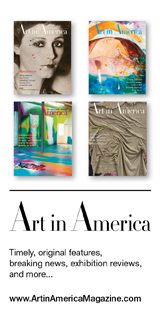Chicago Architecture Biennial Air Houses, Design for a New Climate by François Perrin
16 September '17 - 7 January '18
For the second edition of Chicago Architecture Biennial starting september 16 through january 7, 2018, french architect based in Los Angeles François Perrin propose Air Houses: Design for a New Climate’s project. Throughout most of human history, architecture has developed in response to nature. From the writings of Vitruvius in ancient Rome to the indigenous design practices documented in Bernard Rudofsky’s 1964 book and exhibition Architecture without Architects, civilizations have traditionally built sustainably, utilizing local materials and engineering techniques that work with—not against—landscape and climate.
The birth of modernism changed all this. Even if the early ideas of the movement were concerned with air quality and light, the concept of an International Style—and the advent of air conditioning—turned architecture away from the environment and climate in the 20th century. The postwar avant-garde proposed alternatives, such as Yves Klein’s “architecture of air”—which imagined traditional building materials replaced with air, water, and fire—and the techno-utopianism of Buckminster Fuller, which explored new forms and construction techniques and their connection to the environment. Yet a culture of mass consumerism continues to produce buildings disengaged with their context—at even greater environmental cost.
Now, in this era of climate change, energy crisis, population growth, and political uncertainty, it is necessary to reexamine age-old traditions of climate-responsive construction—such as the Korowai tree houses of Papua New Guinea—in order to create new architecture and design that engages with economic and environmental realities. The Palm House at the Garfield Park Conservatory—and its microclimate—provide the setting for a full-scale builtexperiment that proposes a new direction for building in harmony with nature.
Air Houses: Design for a New Climate looks back to look forward, referencing vernacular traditions and radical 20th century thinkers while prototyping a new direction for the design and fabrication of buildings. Suspended in the canopy, the Air Houses demonstrate a lighter, more flexible approach to building structures that not only provide shelter but also interact with climate conditions—accepting, rejecting, or repurposing sun, wind, and rain to optimize comfort and make the most of natural resources. They also provide a framework for plants to grow and become part of the architecture, reactivating the symbiosis between nature and structure.
Francois Perrin lives and works in Los Angeles, California. He was born in Paris, France, where he earned his professional degree in Architecture. He has completed several residential, commercial and exhibition designs. Concerned with site specificity, his work is always unique to the immediate environmental context and addresses issues of local and sustainable systems. His projects have been featured in Artforum, Domus, New York Times, Los Angeles Times, Wallpaper, Sunset, Dwell, and The Architect’s Newspaper. In addition to his work as a designer, he is also an educator and curator. He has organized several exhibitions including “Dialogues” and “Yves Klein-Air Architecture” at the MAK Center for Art and Architecture and “Architectones” in several locations. Perrin has taught at UCLA, Art Center College of Design, Cal Poly Pomona, Woodbury University, and Sci-Arc and has lectured on his work internationally including the Jan Van Eyck Akademie, MAK Vienna, Columbia University, USC, UCLA, Universite de Montreal and Ecole Speciale d’Architecture.
chicagoarchitecturebiennial.org
francoisperrin.com


























